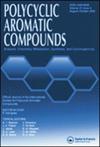Strategic Identification of Anti-Cancer Compounds Targeting PARP15 in DNA Repair Pathways for Enhanced Therapeutic Efficacy
IF 2.6
3区 化学
Q2 CHEMISTRY, ORGANIC
引用次数: 0
Abstract
Cancer is a significant worldwide health concern that requires effective therapies. Addressing this critical issue necessitates innovative treatment strategies concentrating on the fundamental causes of cancer progression. The PARP15 protein is essential in cancer progression by facilitating DNA repair pathways, making it a promising target for anti-cancer therapies. This investigation relies on computational strategies, including virtual screening and molecular dynamics simulations, to identify potential inhibitors of PARP15 target protein. Three potential compounds (26646684, 104224077, and 17505556) with notable binding affinities and interaction patterns were selected for further investigation. Compound 17505556 shows significant interactions, suggesting more stable conformation throughout the simulation against the target protein. Compound 17505556 exhibited the highest binding free energy (-34.07 kcal/mol), significantly outperforming the reference inhibitor I4X (-26.70 kcal/mol). This strong binding affinity suggests that 17505556 forms stable and sustained interactions with PARP15, making it the most promising inhibitor among those studied. Other compounds, 26646684 (-28.92 kcal/mol) and 104224077 (-26.83 kcal/mol), also demonstrated favorable binding energies, indicating their potential as viable inhibitors. The overall result of the investigation suggests the compound 17505556 as a possible drug candidate for the inhibition of DNA repair protein, offering novel avenues for developing an anti-cancer drug candidate.
靶向DNA修复通路中PARP15的抗癌化合物的战略性鉴定以提高治疗效果
癌症是一个重大的全球健康问题,需要有效的治疗方法。解决这一关键问题需要创新的治疗策略,重点关注癌症进展的根本原因。PARP15蛋白通过促进DNA修复途径在癌症进展中至关重要,使其成为抗癌治疗的一个有希望的靶点。这项研究依赖于计算策略,包括虚拟筛选和分子动力学模拟,以确定PARP15靶蛋白的潜在抑制剂。选择了三个具有显著结合亲和力和相互作用模式的潜在化合物(26646684、104224077和17505556)进行进一步研究。化合物17505556表现出显著的相互作用,表明在整个模拟过程中与靶蛋白的构象更稳定。化合物17505556表现出最高的结合自由能(-34.07 kcal/mol),显著优于对照抑制剂I4X (-26.70 kcal/mol)。这种强大的结合亲和力表明17505556与PARP15形成稳定和持续的相互作用,使其成为研究中最有希望的抑制剂。其他化合物26646684 (-28.92 kcal/mol)和104224077 (-26.83 kcal/mol)也显示出良好的结合能,表明它们可能是可行的抑制剂。研究结果表明,化合物17505556可能是抑制DNA修复蛋白的候选药物,为开发抗癌候选药物提供了新的途径。
本文章由计算机程序翻译,如有差异,请以英文原文为准。
求助全文
约1分钟内获得全文
求助全文
来源期刊

Polycyclic Aromatic Compounds
化学-有机化学
CiteScore
3.70
自引率
20.80%
发文量
412
审稿时长
3 months
期刊介绍:
The purpose of Polycyclic Aromatic Compounds is to provide an international and interdisciplinary forum for all aspects of research related to polycyclic aromatic compounds (PAC). Topics range from fundamental research in chemistry (including synthetic and theoretical chemistry) and physics (including astrophysics), as well as thermodynamics, spectroscopy, analytical methods, and biology to applied studies in environmental science, biochemistry, toxicology, and industry. Polycyclic Aromatic Compounds has an outstanding Editorial Board and offers a rapid and efficient peer review process, as well as a flexible open access policy.
 求助内容:
求助内容: 应助结果提醒方式:
应助结果提醒方式:


